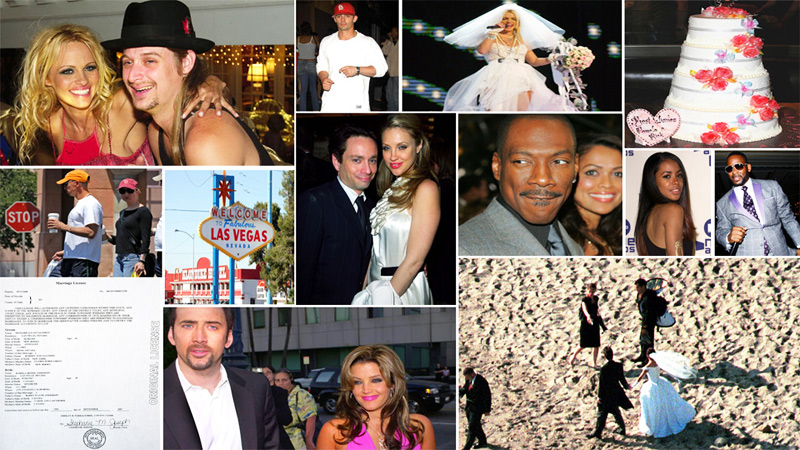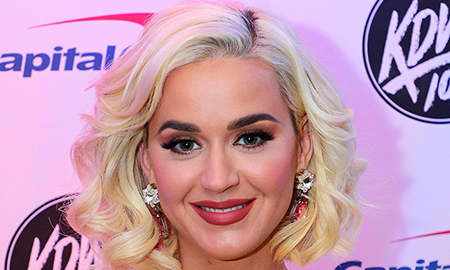
The African popular cultural scene is part of everyday life. It is not a canonical or official, and its uniqueness and dynamic nature make it distinctive. Here are a few ways to learn more about it. You can read on to learn more about Highlife and Griot musics, as well as Djely mousso.
Documentaries on African dancing
Documentaries on African dancing are a great way of learning more about the dances from Africa. Many of these films are about the history of African dances and their culture. Some of the films focus on African dances in different settings. One documentary tells the story of a dance festival in the Swahili coast. Another looks at the world a Sierra Leonean dancer.
Highlife music
Highlife music, originally from West Africa, is a popular African genre. It began in cities but it spread to rural areas following World War II. At the time, the genre was played mostly by guitar bands. E.K. is one of the most well-known solo artists and bands. Nyame was a highlife recording artist who produced over 400 recordings.

Griot music
Griot music is an African-rooted traditional form of music. It is a type of popular music that is played with a traditional instrument, often a harp. The music is rhythmic, and often performed by groups. Popular music began to be explored in the 1960s. Acoustic and electro ensembles introduced folk music to their repertoires. Examples include Koo Nimo from Ghana, Francis Bebey, Cameroons and S. G. Rogie, Sierra Leone. Popular music has also been produced by artists like Toumani Dibata from Mali, who uses both western instruments and griot instruments.
Djely mousso
Djely Mousso has been a significant musical form in many African nations, especially Mali and Guinea. The music is rooted on the tradition and culture of the indigenous griot families. The song is very popular with young people, particularly in urban Flytaal areas.
Musicals
African musicals from popular culture are a growing business. Fela’s Republic & the Kalakuta Queens - a musical about the legendary Fela and the band he formed - is the top-selling musical in Africa. This production has been performed across the continent in Lagos and Cairo as well as Pretoria.
Masks
Popular African culture uses masks for many purposes. While they are usually made of wood, some masks can also be made from lighter stones like steatite. They can also be made with metals like copper. Some are even painted. Others are made with natural pigments or colorants. You can decorate them with ornaments, such animal hair to make the beard and straw to make the brows.

Stories
Stories of African Popular Culture examines the contradictions and complexity of African popular culture. The many topics covered in this book range from popular literature and oral tradition to music, film, and dance. Popular culture in Africa is both global and local, and can include both native and imported elements.
FAQ
Who was the first to coin the term Pop Music
Frank Zappa invented the concept. Pop music was his preferred style.
He stated that he wanted music that was accessible to all. That's why he called his music pop music.
Zappa also invented the phrase "You Know It's Pop when ..."", which signifies that something is popular if there are many people who enjoy it. Michael Jackson's Thriller is one example of the greatest-selling albums.
Zappa's definitions for pop music are quite different from the current. Today, pop music includes all types of music. But back then, only certain kinds of music were considered pop.
What are examples of pop culture in 2021?
Two hijacked airplanes from terrorists crashed into New York City's twin towers on the 11th September 2001. 9/11 was the day that would change history.
The events of that day have influenced popular culture today. We can see many ways the event has influenced lives.
It includes TV shows like 24, and movies like United 93. This tells the story about what happened on the flight from Boston (Mass.) to Los Angeles (Calif.) on 9/11. This includes books such as The Forever War by Dexter Filkins.
Everyone can remember exactly where they were when the attacks occurred. Some people jumped out of their beds and went outside. Others read newspapers or watched TV.
Pop culture changes each year. It is an expression of society and a source of inspiration. What will the future look like for popular culture? We don't know yet. All we know is that it will be different than it was before.
How can we avoid falling prey to the temptations of pop culture?
First, it is important to recognize when pop-culture influences us. Then, we need to ensure that we are not being influenced. Here are ways to help you stay away from bad influences:
-
Avoid watching Game Of Thrones and other violent shows.
-
Spend less time surfing the Internet. Read books instead.
-
Spend less time watching television. Spend your free time on healthy activities.
-
Take care of what you post online. After comments have been posted, they can't be deleted.
-
Be sure to verify that the websites you visit have SSL encryption. Before entering personal information, ensure that they are checked.
-
Do not allow anyone to force you into doing anything dangerous.
Talk to an adult to help you if you find yourself addicted to pop music. Call your local library (1-800-883-THE-LOST) or the National Center for Missing & Exploited children (1-800-THE-883-LOOK).
What are some examples of pop culture in today's world?
Pop Culture is the art form of the 21st century. It includes all types of entertainment including music, film TV, videogames, fashion and advertising. Author Neil Postman coined the term in his book Amusing Ourselves To Death (1985). Pop refers to mass communication that uses formulaic and cheap tricks to create an illusion or spontaneity.
He did however point out that most people don't feel genuine enjoyment because they are trained to seek media experiences which make them feel superior. In addition, he argued that this type of cultural expression had contributed to the loss of critical thinking skills among young adults.
Pop culture is also known as consumerism or popular culture.
Why is pop music so popular?
Pop music is very popular because it's fun! Pop music is uplifting and can give you a great feeling of freedom. People listen to pop music and are free to think about anything but themselves. They don't have to worry about what other people think. Pop music is a hugely popular genre. People love to listen to songs that are positive and upbeat. If you're feeling down, you can always turn on the radio and hear some upbeat tunes. You may find yourself singing along. Pop music has been so popular over the years because of this.
Is Tik Tok pop-culture?
Yes! It's not for teenagers. These videos can be used by anyone to express their feelings, share life moments, and show support.
The app is used daily by more than 200 million people around the globe. Each day, the number of users grows by millions.
This makes TikTok an incredible opportunity for brands to connect with consumers and build meaningful relationships.
Many influencers have established huge followings on TikTok. These creators create original content to engage audiences all over the globe.
Don't wait! If you want to take advantage of this trend, here are four ways to do it.
-
Make viral content
-
Engage Influencers
-
Use Visuals Effectively
-
Creativity with Your Audience
How can I make pop culture part of my marketing strategy
You need to examine the trends in pop culture to learn how you can use it in your marketing strategy.
Let's suppose you wanted to promote the release of a new film. What type of promotion can you do?
You can create a trailer by using clips from your film. You could even find a clip that features one of your products or services and includes it in the video.
Perhaps you could make a parody of the trailer with other films.
You can use the movie's plotline as a basis for your promotional campaign, if you are promoting a product/service related to that film's theme. A product that supports astronauts' health while traveling through outer space might be an example of a product you could advertise.
Promos could be run for businesses that are related to the movie's plotline. A company that sells food could give away free samples to customers who book tickets to see the movie.
Statistics
- For example, the term hater meaning someone who strongly undermines or criticizes others, often due to pathetic jealousy, likely emerged from hip hop culture, such as the term playa hateras, used by influential rapper Biggie Smalls as early as 1995. (simplicable.com)
- Yet a Nielsen study shows they account for 42% of the country's most-watched content on streaming services. courtesy Nielsen (npr.org)
- Less than a decade later, that statistic rose to 90% (Dager, n.d.). (socialsci.libretexts.org)
- According to Dictionary.com, popular culture, or low culture as it is sometimes referred to is comprised of the “cultural activities or commercial products reflecting, suited to, or aimed at the tastes of the general masses of people” (7/21/19). (socialsci.libretexts.org)
- In 1987, US films captured 56% of the European film market. (socialsci.libretexts.org)
External Links
How To
What are some of the most famous pop culture references you can think of?
Americans were obsessed with space travel in the 1960s. Star Trek was then the most popular television show.
The original series aired on NBC from 1966-1969. It featured William Shatner, Leonard Nimoy, Mr. Spock, DeForest Kelley, James Doohan, Dr. McCoy, and James Doohan as Scotty. (Wikipedia)
In 1967, the series was the subject of the first feature-length film. Paramount Pictures released "Star Trek" as the title. The movie, directed by Robert Wise, featured an ensemble cast including William Shatner, Leonard Nimoy, DeForest Kelley, James Doohan, Walter Koenig, Majel Barrett, Roland Nichelle Nichols, George Takei, and Grace Lee Whitney. (Wikipedia)
In 1968, the second season started airing on television. The crew traveled back in time to 1969 for this season. (Wikipedia)
A few years later, in 1971, the third season of the television series started airing. The third season featured a new character, Commander Richard A. Morn. He was a Starfleet officers who was originally born on Earth 2063. (Wikipedia)
A live-action spinoff of Star Trek: Planet of the Apes was also produced during this period. It aired from 1972 to 1974. (Wikipedia)
In 1973, the fourth season of the television series debuted. Two new characters were introduced in this season's fourth season: Ensign Ro Laren and Lieutenant Ilia. They were both played by Marina Sirtis. (Wikipedia)
The fifth season of the TV series premiered in 1975. It was the last series to air before the franchise went out of business. (Wikipedia)
After the television series was cancelled, numerous attempts were made at its revival. Some of them were a 1977 pilot episode called "Where No Man Has Gone Before", which was unsuccessful in finding a partner studio or network. (Wikipedia)
Star Trek: New Voyages, a 1998 animated series, was also produced. It lasted 13 episodes. (Wikipedia).
After a seven years hiatus, the sixth episode of the television series was aired in 2009. It was titled "Enterprise". It ran for five seasons before it ended in 2013. (Wikipedia)
There were also three feature films produced during this era. The first was released in 1979. It was known as "Star Trek: The Motion Picture." Nicholas Meyer directed it. The film starred William Shatner, James Doohan, Leonard Nimoy, Walter Koenig, George Takei, Majel Barrett Roddy, and Ricardo Montalban. (Wikipedia)
The following two movies were released respectively in 1982 and 1987. They were "Star Trek II - The Wrath of Khan", and "Star Trek III - The Search For Spock". Both of these movies were directed by Nicholas Meyer. (Wikipedia)
In 2001, the seventh season aired. It was entitled "Encounter at Farpoint". It was the debut episode of the show's era without guest stars. (Wikipedia)
2005 was the last episode of the television series. It was titled "All Good Things...". It was written in Ronald D. Moore. David Livingston directed the film. (Wikipedia.)
Star Trek TV's 2008 premiere saw the debut of a new show called "Trek Nation". It was called "Trek Nation". It is currently being aired on CBS. (Wikipedia)"Trek Nation" is about a group of people from different walks of life who get together to form their version of the United Federation of Planets. Their goal is to help other planets achieve peace with each other. (Wikipedia). "Trek Nation" is a very interesting concept because it shows how diverse people can come together and create something good. (YouTube Video)
You should read books on the timeline of Star Trek. Gary Wolfe's Star Trek Chronology is a great place to start. There are many more books available online.